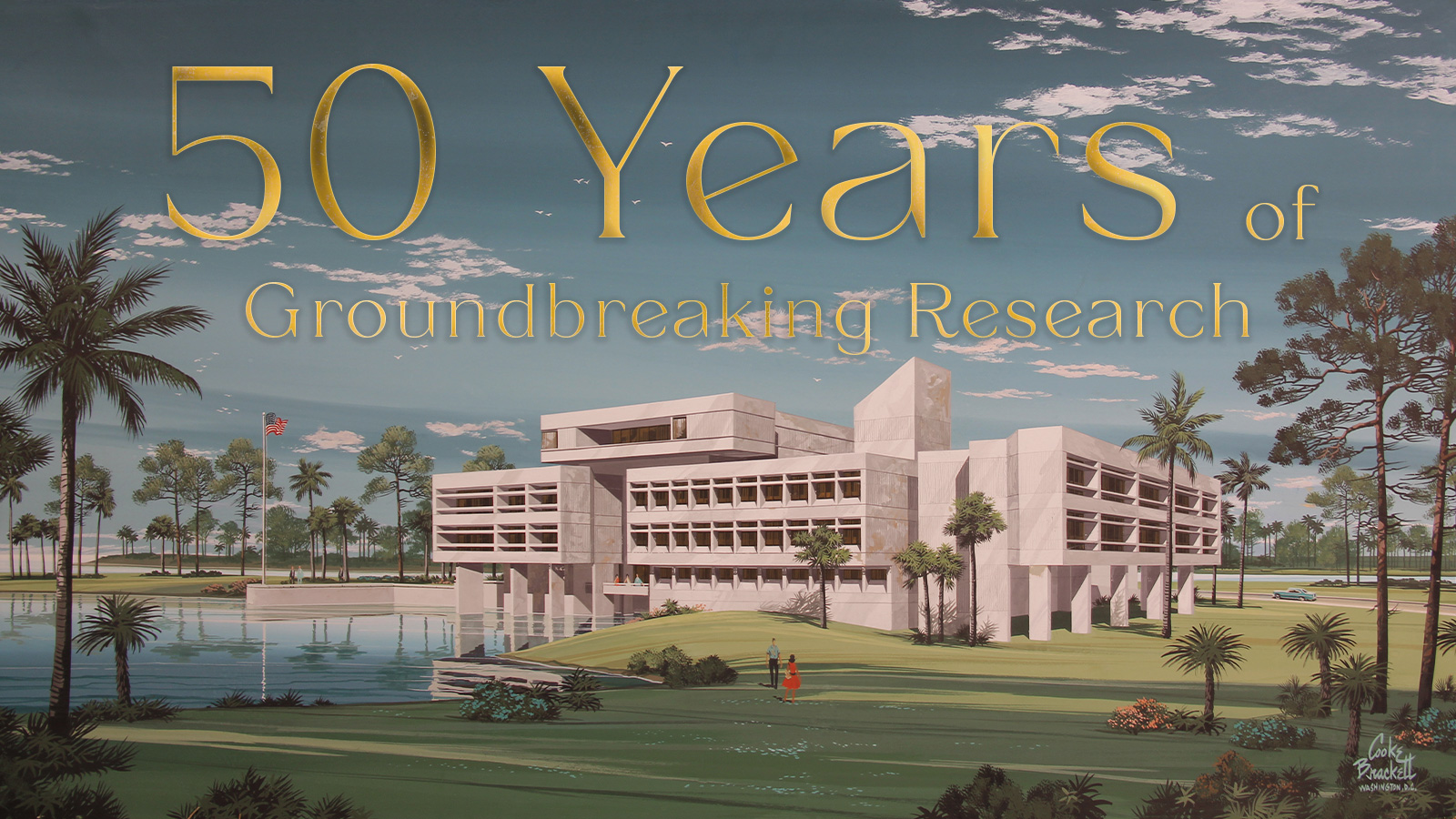Fifty years ago, NOAA opened the Atlantic Oceanographic & Meteorological Laboratories (AOML) on Virginia Key in Miami, Florida. Since its inception on February 9, 1973, AOML has been a leader in Earth system research, providing trusted scientific data and knowledge to predict changes in weather, climate, oceans, and marine ecosystems. From entering measurements on keypunch cards, to the development of a state-of-the-art data center, AOML continues to build on the experience and discoveries of five decades of technological and scientific advancements. Throughout 2023, AOML will be celebrating 50 years of science, service, and stewardship. Follow along as we look back at our challenges and accomplishments, and reflect on the significant impacts our lab has made on society.

A Brief History of AOML
In July 1965, NOAA’s predecessor, the Environmental Sciences Service Administration (ESSA) was established within the U.S. Department of Commerce. Soon after, the Institute for Oceanography was created as one of ESSA’s four environmental research institutes. The following year, ESSA announced its intention to build a multi-million dollar oceanographic research facility somewhere along the eastern seaboard. Dr. Harris B. Stewart was selected as the chairman of ESSA’s Site Evaluation Committee, which visited 114 potential sites from Maine to the Virgin Islands. In April 1967, it was announced that the Virginia Key site was selected as the location for the new ESSA site. That summer, the “Institute” level of organization was abolished and the name of the Miami-based groups was changed to the Atlantic Oceanographic Laboratories (AOL).
In 1968, two meteorological groups—the National Hurricane Research Laboratory (NHRL) and the Experimental Meteorology Laboratory (EML)—were reorganized and incorporated into AOL, necessitating a name change to the Atlantic Oceanographic and Meteorological Laboratories (AOML). In October of 1970, ESSA was abolished and its functions were transferred to a new federal agency called the National Oceanic and Atmospheric Administration (NOAA). Two weeks later, groundbreaking ceremonies were held on Virginia Key for the construction of the new NOAA AOML facility. After 3 years of construction, dedication ceremonies for the new AOML facility were held on February 9, 1973, beginning the start of a new era of scientific research!
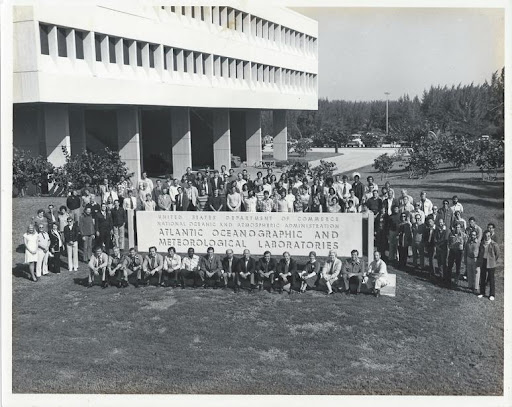
At the time of inception, AOML was made up of four research laboratories: Physical Oceanography, Sea-Air Interaction, Marine Geology & Geophysics, and Ocean Remote Sensing. The laboratories were later renamed as “divisions” and consolidated to Physical Oceanography, Hurricane Research, and Ocean Chemistry & Ecosystems.
AOML’s current mission is to conduct and transition world-class Earth system research, with a focus on the Atlantic Ocean region, to inform: the accurate forecasting of extreme weather and ocean phenomena, the management of marine resources, and an understanding of climate change and associated impacts, thereby improving ocean and weather services for the region, the nation, and the world.
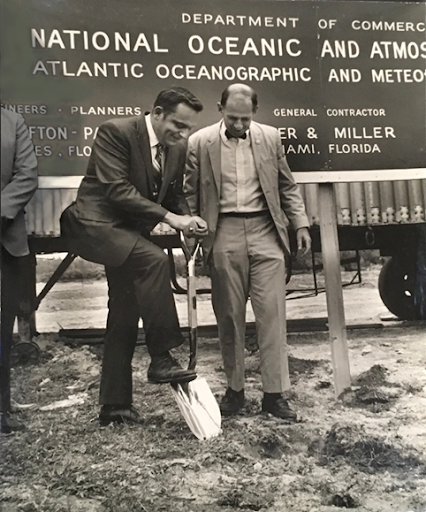
AOML Leadership in 1973
Dr. Harris B. Stewart, Jr., AOML Director
Mr. John W. (“Jack”) Kofoed, AOML Deputy Director
Mr. John B. (“Jack”) Egland, Administrative Officer
Dr. Donald V. Hansen, Director, Physical Oceanography Laboratory
Mr. Feodor Ostapoff, Director, Sea-Air Interaction Laboratory
Dr. George Keller, Director, Marine Geology & Geophysics Laboratory
Dr. John Apel, Ocean Remote Sensing Laboratory
AOML Beginnings
At the time of its founding, AOML was conducting research in a variety of fields, all with the purpose of better understanding how Earth systems work and how they impact our lives.
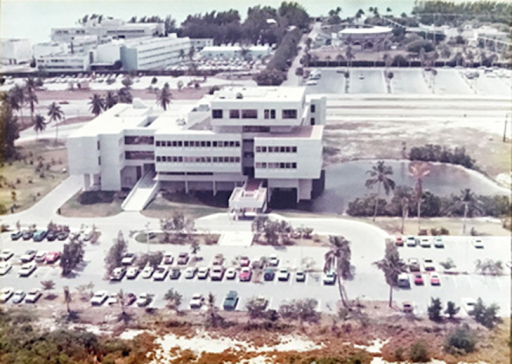
Aerial image of the AOML building and parking lot (1970s)
Photo Credit: AOML Archive.
View of the balcony and seating area prior to AOML’s inauguration ceremony on February 9, 1973.
Photo Credit: AOML Archive
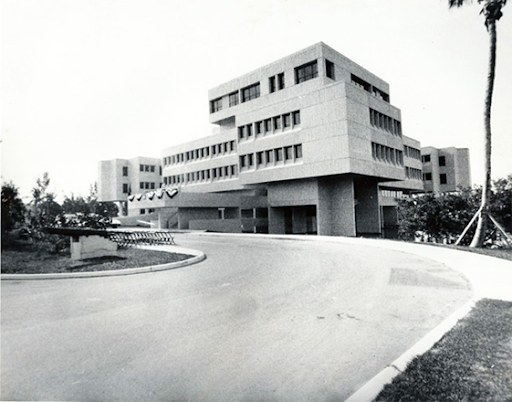
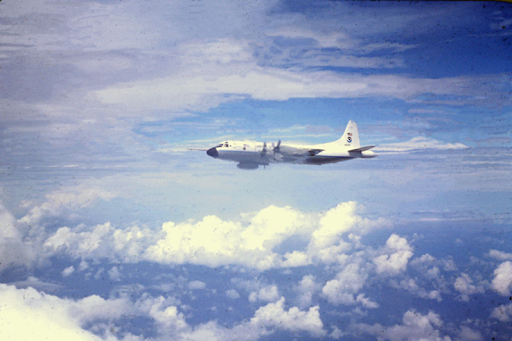
NOAA Lockheed P-3 aircraft in flight (1970s). In 1975-76, two Lockheed P-3 Orion aircraft were added to NOAA’s Hurricane Hunter fleet, outfitted with the latest in computers and weather instruments, including three different radar antennae on each aircraft. The quality of field data was boosted considerably once these planes became available
Photo Credit: AOML Archive
Tide gauge in situ (1976). Note the triangular base and the horizontal current meter as seen in the image above
Photo Credit: AOML Archive
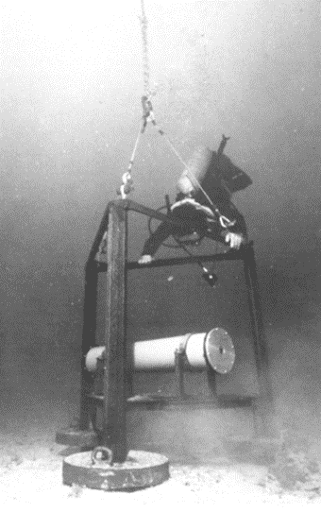
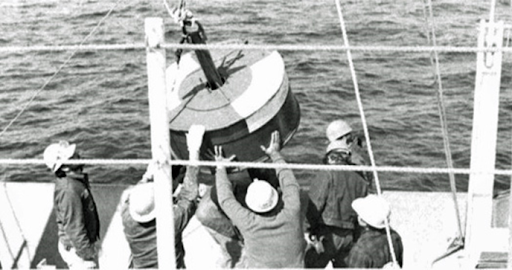
The drum shaped float of a deep-sea pressure gauge array is put over the side of the ship and the entire array streams out in proper order before sinking to the ocean floor (1976)
Photo Credit: AOML Archive
[Left to right:] LT Roger DeVivo, LTJG Richard Permenter and AOML Diving Officer Richard Rutkowski on deck (February 28, 1975). Miami Beach is seen in the background
Photo Credit: AOML Archive
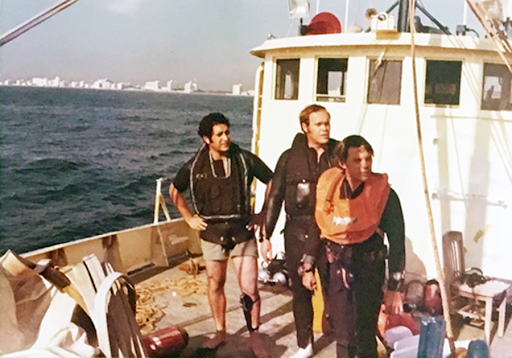
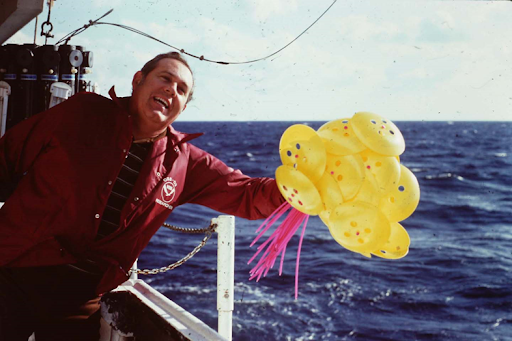
AOML scientist Ben Culverhouse ready to release current drifters from the NOAA ship RESEARCHER in December 1975
Photo Credit: AOML Archive
AOML scientist Charles A. Lauter with the stereo deep-sea camera aboard the NOAA ship DISCOVER (1970s). Lauter navigated the ship during the exploration of the area to maintain the camera at a prescribed distance off the bottom
Photo Credit: AOML Archive
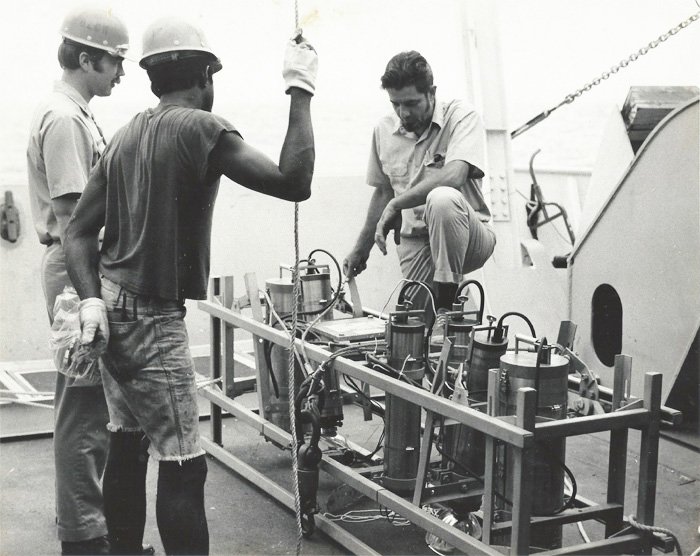
Stay tuned throughout the year as we continue to share 50 years of highlights from AOML!
